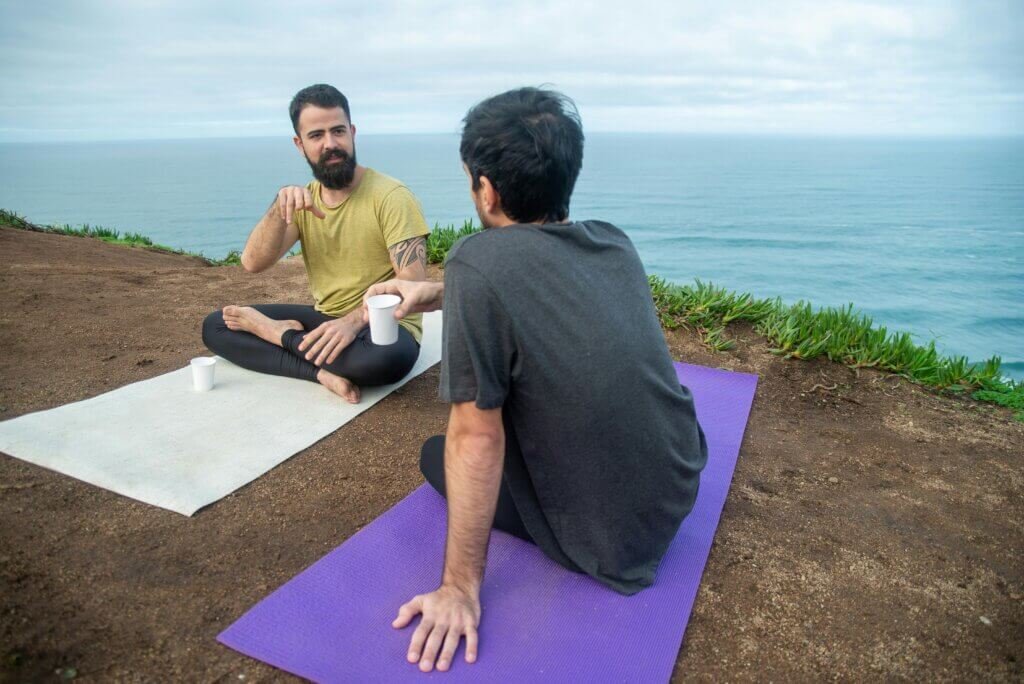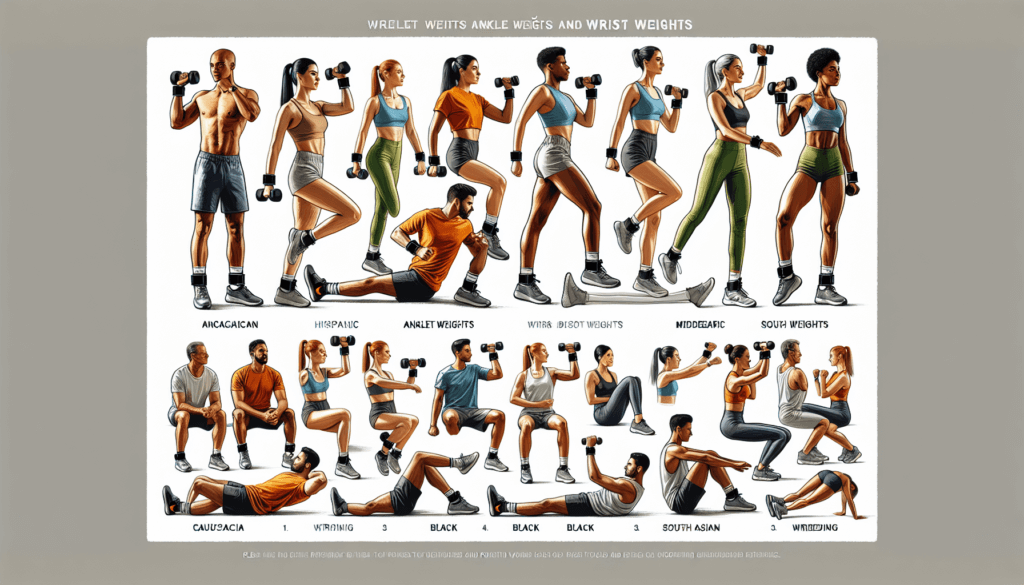If you’re looking to level up your workout routine and maximize your gains, then you’ve come to the right place. In this article, we’ll be exploring the effective ways to use ankle weights and wrist weights as workout accessories. Whether you’re a fitness enthusiast or just starting your fitness journey, incorporating these simple yet powerful tools into your routine can take your workout to new heights. So grab your weights and get ready to discover how to make the most out of them for a more challenging and rewarding workout.
Benefits of Using Ankle Weights and Wrist Weights
When it comes to taking your workouts to the next level, ankle weights and wrist weights can be valuable tools. They offer a range of benefits that can enhance your strength, cardio fitness, stability, and more. Here are some of the key advantages of incorporating ankle weights and wrist weights into your exercise routine:
Increased resistance for muscle strengthening
Ankle weights and wrist weights provide added resistance, which can help to intensify your workouts and target specific muscle groups. By increasing the load on your muscles, these weights make them work harder, leading to improved strength and muscle tone. Whether you’re performing squats, lunges, or leg raises, ankle weights can add an extra challenge and maximize your efforts.
Improved cardiovascular fitness
Adding ankle weights or wrist weights to your cardio exercises, such as walking or jogging, can boost your cardiovascular fitness. The additional resistance forces your heart and lungs to work harder, increasing your heart rate and oxygen consumption. This helps to improve your cardiovascular endurance and overall fitness level. So, whether you’re walking, running, or performing high-intensity interval training (HIIT), don’t forget to strap on those weights!
Enhanced core stability
Ankle weights and wrist weights can also benefit your core stability. When used in exercises that require you to maintain a stable and balanced posture, such as planks or Russian twists, the added resistance challenges your core muscles even more. This can lead to improved core strength and stability, helping to support your spine, improve posture, and prevent injuries.
Improved balance and stability
By adding extra weight to your ankles or wrists, you can challenge your body’s balance and coordination. This can be particularly beneficial for activities that require stability, such as yoga or Pilates. Ankle weights and wrist weights engage the small stabilizer muscles, helping to improve proprioception and body awareness. Over time, this can lead to better balance and stability in a variety of movements.
Increased calorie burn
If you’re looking to ramp up your calorie burn during workouts, ankle weights and wrist weights are excellent tools. The added resistance increases the effort required to perform exercises, which results in more calories being burned. This can be especially beneficial if you’re aiming to lose weight or maintain a healthy weight. By wearing ankle weights or wrist weights during your workouts, you can maximize your calorie burn and achieve your fitness goals more efficiently.
Choosing the Right Ankle Weights and Wrist Weights
When it comes to selecting ankle weights and wrist weights, there are several factors to consider to ensure you find the right ones for your needs. Here are some key considerations to keep in mind:
Consider the weight range
Ankle weights and wrist weights are available in various weight options. It’s important to choose a weight that is appropriate for your fitness level and goals. If you’re new to using these weights, start with lighter options and gradually increase the resistance as your strength and endurance improve. On the other hand, if you’re experienced and looking for a challenge, opt for heavier weights to push yourself further.
Ensure proper fit and adjustability
A good pair of ankle weights or wrist weights should fit comfortably and securely. Look for options that offer adjustable straps or closures, allowing you to customize the fit to your body. This ensures that the weights stay in place during your workouts and minimizes the risk of any discomfort or chafing.
Choose comfortable materials
Comfort is key when it comes to ankle weights and wrist weights. Look for options made from breathable and sweat-wicking materials, such as neoprene or moisture-wicking fabric. This helps to keep your skin dry and prevents any irritation or discomfort during your workouts.
Evaluate durability and quality
Investing in ankle weights and wrist weights that are durable and of high quality is essential for their long-term use. Check for reinforced stitching, strong closures, and sturdy materials to ensure they can withstand regular use and intense workouts. Opting for reputable brands known for their quality can help ensure you’re getting a reliable product.

Safety Precautions and Guidelines
While ankle weights and wrist weights can offer numerous benefits, it’s essential to use them safely and responsibly to prevent any injuries or strain. Here are some important safety precautions and guidelines to follow when incorporating ankle weights and wrist weights into your workouts:
Consult with a healthcare professional
Before starting any new exercise routine or using ankle weights and wrist weights, it’s always a good idea to consult with a healthcare professional, especially if you have any underlying health conditions or injuries. They can provide personalized advice and guidance based on your individual needs and ensure you’re using the weights in a safe and appropriate manner.
Start with lighter weights
If you’re new to using ankle weights and wrist weights, it’s important to start with lighter options to allow your body to adapt gradually. This helps to prevent strain or injuries. Begin with weights that feel comfortable and manageable for your current fitness level, and gradually increase the resistance as your strength and endurance improve.
Maintain proper form and technique
It’s crucial to maintain proper form and technique when using ankle weights and wrist weights. Pay attention to your posture, engage your core, and ensure you’re performing exercises with the correct alignment. This helps to maximize the benefits while minimizing the risk of strain or injury. If you’re unsure about the proper form, consider working with a qualified fitness professional for guidance.
Avoid using weights for certain exercises
While ankle weights and wrist weights can be beneficial for many exercises, there are certain movements where they may not be recommended. Exercises that involve rapid or jerky movements, such as jumping or ballistic movements, can put excess strain on your joints and increase the risk of injury. It’s best to avoid using weights for these types of exercises or consult with a fitness professional for modified options that are safe and effective.
Listen to your body
Always listen to your body and pay attention to any signs of discomfort or pain. It’s normal to experience muscle fatigue during workouts, but sharp or intense pain should not be ignored. If something doesn’t feel right, remove the weights and modify the exercise if necessary. Pushing through pain can lead to injuries, so it’s important to prioritize your well-being and safety.
Exercises Using Ankle Weights
Ankle weights are versatile workout accessories that can be used to target different muscle groups. Here are some effective exercises using ankle weights:
Ankle Weight Walking
Ankle weight walking is a simple yet effective exercise that can strengthen your leg muscles and improve cardiovascular fitness. Strap on the ankle weights and go for a brisk walk, paying attention to good posture and maintaining a steady pace. The added resistance challenges your leg muscles, leading to increased strength and endurance.
Ankle Weight Lunges
Lunges are excellent for targeting the muscles of your lower body, and adding ankle weights takes them up a notch. Stand with your feet hip-width apart and step one leg forward, bending both knees to create a lunge position. As you lunge down, feel the added resistance from the ankle weights, engaging your glutes, quads, and hamstrings. Repeat on the other leg.
Ankle Weight Kickbacks
Ankle weight kickbacks primarily target your glutes and hamstrings. Start on all fours with your palms and knees on the ground. Attach ankle weights and extend one leg straight back, keeping your foot flexed and your glute engaged. Lower your leg back down and repeat on the other leg. This exercise helps to tone and strengthen your glutes and hamstrings.
Ankle Weight Leg Raises
Ankle weight leg raises are an effective exercise for targeting your lower abdominal muscles. Lie on your back with your legs extended and place ankle weights on your ankles. Keeping your core engaged, lift your legs up towards the ceiling, then slowly lower them back down without touching the floor. This exercise helps to build core strength and tone your lower abs.
Ankle Weight Step-Ups
Step-ups with ankle weights are great for targeting your glutes, quads, and hamstrings. Find a stable platform or step, and place one foot entirely on the step. Step up with that foot, then bring the other foot up, ensuring your knee stays aligned with your ankle. Step back down and repeat on the other leg. The additional weight adds resistance, making the exercise more challenging.

Exercises Using Wrist Weights
Wrist weights can be used to tone and strengthen your upper body muscles. Here are some effective exercises using wrist weights:
Wrist Weight Arm Circles
Arm circles with wrist weights can effectively target your shoulder and arm muscles. Stand with your feet shoulder-width apart and hold your arms out to the sides, parallel to the floor, with wrist weights on. Make small circles with your arms, gradually increasing the size of the circles. This exercise helps to improve shoulder stability and strengthen your deltoids and rotator cuff muscles.
Wrist Weight Punches
Wrist weight punches are a dynamic exercise that engages your arm and shoulder muscles. Start in a standing position with your legs shoulder-width apart and your arms bent at a 90-degree angle, holding wrist weights. Extend one arm forward and punch, then retract it back to the starting position. Repeat with the other arm. This exercise helps to build arm and shoulder strength.
Wrist Weight Bicep Curls
Bicep curls with wrist weights are great for targeting your biceps and forearm muscles. Stand with your feet shoulder-width apart and hold your arms straight down, palms facing forward, with wrist weights on. Bend your elbows and curl the weights towards your shoulders, then slowly lower them back down. Focus on controlling the movement and engaging your biceps throughout.
Wrist Weight Tricep Extensions
Tricep extensions with wrist weights can effectively target the back of your arms. Stand with your feet shoulder-width apart and hold your arms straight up above your head, palms facing inward, with wrist weights on. Bend your elbows and lower the weights behind your head, keeping your upper arms still. Extend your arms back up to the starting position. This exercise helps to tone and strengthen your triceps.
Wrist Weight Shoulder Press
Shoulder presses with wrist weights are excellent for targeting your shoulder muscles. Stand with your feet shoulder-width apart and hold your arms bent at a 90-degree angle, with wrist weights on. Push the weights straight up overhead, fully extending your arms, then slowly lower them back down to the starting position. Focus on maintaining proper form and engaging your shoulder muscles.
Combining Ankle Weights and Wrist Weights
To maximize the benefits of both ankle weights and wrist weights, you can combine them in various ways for a full-body workout. Here are some examples of how you can use ankle weights and wrist weights together:
Ankle and Wrist Weight Walking or Running
One way to combine ankle weights and wrist weights is to wear both during your walking or running sessions. This adds resistance to both your upper and lower body, challenging your muscles and increasing your calorie burn. Start with lighter weights and gradually increase the resistance as you become more comfortable.
Ankle and Wrist Weight Circuit Training
Circuit training involves performing a series of different exercises targeting different muscle groups, with little to no rest in between. By incorporating ankle weights and wrist weights into your circuit training routine, you can maximize the resistance and engagement of your muscles. Design a circuit that includes exercises for both the lower and upper body, ensuring proper form and technique for each movement.
Ankle and Wrist Weight HIIT Workouts
HIIT (high-intensity interval training) workouts are known for their intense bursts of activity followed by short recovery periods. Adding ankle weights and wrist weights to your HIIT workouts can further intensify the exercises and boost the calorie burn. Incorporate exercises such as jump squats, mountain climbers, or burpees, while wearing ankle and wrist weights, and push yourself to your maximum effort during the work intervals.

Tips for Getting the Most Out of Ankle Weights and Wrist Weights
To make the most of your ankle weights and wrist weights and achieve optimal results, here are some helpful tips:
Gradually increase weight and resistance
As your strength and endurance improve, gradually increase the weight or resistance of your ankle weights and wrist weights. This progressive overload helps to continuously challenge your muscles and prevent plateauing. Start with lighter weights and increase by small increments to avoid straining your joints or muscles.
Use proper breathing techniques
Proper breathing is essential during any workout. When using ankle weights and wrist weights, focus on inhaling deeply before the exertion phase of an exercise and exhaling fully during the exertion phase. This helps to oxygenate your muscles and maintain proper energy levels throughout your workouts.
Incorporate variety and different exercises
To prevent boredom and ensure balanced muscle development, incorporate a variety of exercises that target different muscle groups. Swap out exercises, try new movements, and challenge yourself with different combinations of ankle weight and wrist weight exercises. This variety keeps your workouts interesting and helps to engage various muscles for a well-rounded fitness routine.
Maintain consistency in your workouts
Consistency is key when it comes to achieving your fitness goals. Set a schedule and make a commitment to use ankle weights and wrist weights regularly in your workouts. Aim for at least two to three days per week, gradually increasing the frequency as you become more comfortable. Consistency helps to build strength and muscle memory, leading to more significant improvements over time.
Track progress and set goals
To stay motivated and track your progress, set specific goals for your ankle weight and wrist weight workouts. Monitor your performance by tracking the number of repetitions, sets, or duration of your exercises. As you progress, challenge yourself by increasing weight or resistance, or by setting new performance goals. Having measurable objectives helps to keep you focused and motivated.
Choosing the Right Ankle and Wrist Weight Exercises for Your Goals
Depending on your fitness goals, you can choose specific exercises that target different areas of fitness. Here are some examples:
Strength and muscle building
If your goal is to build strength and muscle, focus on exercises that target major muscle groups, such as squats, lunges, bicep curls, and tricep extensions. Use heavier ankle weights and wrist weights that challenge your muscles without compromising your form. Aim for lower repetitions with higher resistance to promote muscle growth.
Cardiovascular and endurance training
To improve cardiovascular fitness and endurance, incorporate exercises that elevate your heart rate, such as walking, jogging, or cycling. Choose lighter ankle weights and wrist weights that allow you to maintain a steady pace without sacrificing your form. Aim for longer durations and higher repetitions to keep your heart rate elevated.
Core strength and stability
For core strength and stability, focus on exercises that engage your abdominal muscles, such as planks, Russian twists, or leg raises. Use ankle weights or wrist weights to add resistance and challenge your core muscles even more. Aim for controlled movements and proper form to effectively engage and strengthen your core.
Balance and coordination improvement
To improve your balance and coordination, incorporate exercises that challenge your stabilizer muscles, such as yoga poses or single-leg movements. Use ankle weights or wrist weights to add resistance and increase the difficulty level. Focus on maintaining proper alignment and engaging your core to enhance stability and balance.
Weight loss and calorie burn
If weight loss and calorie burn are your goals, incorporate exercises that engage multiple muscle groups and elevate your heart rate, such as high-intensity interval training (HIIT) or circuit training. Use ankle weights and wrist weights to increase resistance and make the exercises more challenging. Aim for shorter, intense bursts of activity followed by brief recovery periods to maximize calorie burn.

Proper Care and Maintenance of Ankle Weights and Wrist Weights
To ensure the longevity and effectiveness of your ankle weights and wrist weights, proper care and maintenance are crucial. Here are some tips to keep them in good condition:
Cleaning and washing instructions
Check the care instructions provided by the manufacturer for specific cleaning and washing instructions. In most cases, ankle weights and wrist weights can be wiped clean with a damp cloth or mild soap. Avoid fully submerging them in water or using harsh chemicals that may damage the materials.
Proper storage to prevent damage
Store your ankle weights and wrist weights in a cool, dry place when not in use. Avoid exposing them to direct sunlight or extreme temperatures, as this can cause the materials to deteriorate or fade. Consider using a designated storage bag or container to keep them organized and prevent any damage.
Regular inspection for wear and tear
Periodically inspect your ankle weights and wrist weights for signs of wear and tear, such as frayed stitching or damaged straps. Replace any worn-out or damaged weights to ensure your safety during workouts. Regularly checking for any signs of deterioration helps to maintain the quality and effectiveness of the weights.
Replacing worn-out weights
Over time, ankle weights and wrist weights may lose their effectiveness or become less comfortable to wear due to wear and tear. If you notice any significant signs of deterioration or discomfort, it may be time to replace them with new ones. Investing in high-quality weights and regularly assessing their condition will help you get the most out of your workout accessories.
Conclusion
Ankle weights and wrist weights can be valuable tools to enhance your workouts and achieve your fitness goals. From increased resistance for muscle strengthening to improved cardiovascular fitness and enhanced stability, these accessories offer a wide range of benefits. By choosing the right weights for your needs, following safety precautions, and incorporating various exercises into your routine, you can maximize the effectiveness and enjoyment of your workouts. Remember to listen to your body, track your progress, and prioritize proper care and maintenance for your ankle weights and wrist weights. With dedication and consistency, you can take your fitness journey to new heights with the help of these versatile workout accessories.



